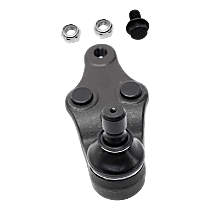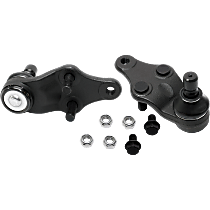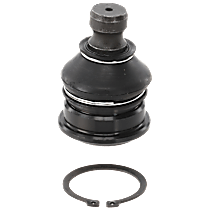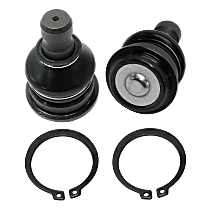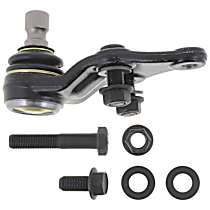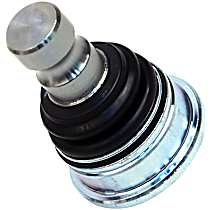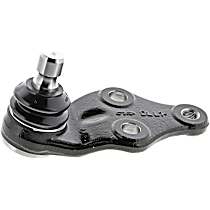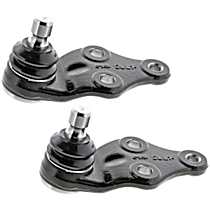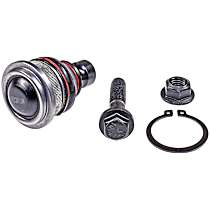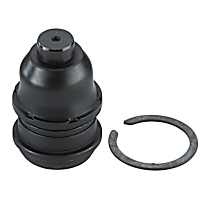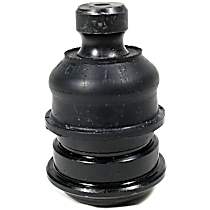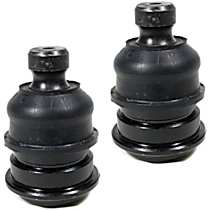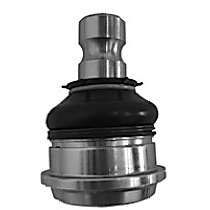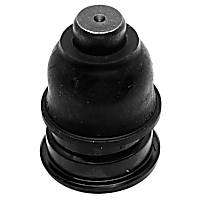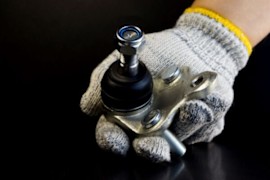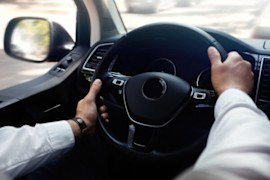{
"lazyNodes": false,
"abFitnotesFlag": false,
"abCrawlReviews": false,
"productOptionsCookie": false,
"orderDelayFlag": false,
"skipSessionCookie": false,
"covidMessage": false,
"fullTitleCookie": false,
"nrLoggerCookie": false,
"checkoutReviewCookie": false,
"productOptionSeqCookie": false,
"maintenanceFlag": false,
"bufferETACookie": false,
"multiShippingDiscountFlag": false,
"newFitmentFlag": false,
"surveyOptInFlag": false,
"crossSellFlag": false,
"skuMappingFlag": false,
"paySplitCookie": false,
"callDisableFlag": false,
"zipPaymentFlag": "u",
"hassleFreeReturn": false,
"lifetimeReplacement": false,
"cpn_off": false
}Hyundai Santa Fe Ball Joints
Shop Catalog
![]() WARNING: This product can expose you to chemicals including Lead and Mineral Oils, which are known to the State of California to cause cancer and birth defects or other reproductive harm. For more information go to www.P65Warnings.ca.gov.
WARNING: This product can expose you to chemicals including Lead and Mineral Oils, which are known to the State of California to cause cancer and birth defects or other reproductive harm. For more information go to www.P65Warnings.ca.gov.
![]() WARNING: This product can expose you to chemicals including Lead and Mineral Oils, which are known to the State of California to cause cancer and birth defects or other reproductive harm. For more information go to www.P65Warnings.ca.gov.
WARNING: This product can expose you to chemicals including Lead and Mineral Oils, which are known to the State of California to cause cancer and birth defects or other reproductive harm. For more information go to www.P65Warnings.ca.gov.
![]() WARNING: This product can expose you to chemicals including Lead and Mineral Oils, which are known to the State of California to cause cancer and birth defects or other reproductive harm. For more information go to www.P65Warnings.ca.gov.
WARNING: This product can expose you to chemicals including Lead and Mineral Oils, which are known to the State of California to cause cancer and birth defects or other reproductive harm. For more information go to www.P65Warnings.ca.gov.
![]() WARNING: This product can expose you to chemicals including Lead and Mineral Oils, which are known to the State of California to cause cancer and birth defects or other reproductive harm. For more information go to www.P65Warnings.ca.gov.
WARNING: This product can expose you to chemicals including Lead and Mineral Oils, which are known to the State of California to cause cancer and birth defects or other reproductive harm. For more information go to www.P65Warnings.ca.gov.
![]() WARNING: This product can expose you to chemical which is known to the State of California to cause cancer and birth defects or other reproductive harm. For more information go to www.P65Warnings.ca.gov.
WARNING: This product can expose you to chemical which is known to the State of California to cause cancer and birth defects or other reproductive harm. For more information go to www.P65Warnings.ca.gov.
![]() WARNING: This product can expose you to chemical which is known to the State of California to cause cancer and birth defects or other reproductive harm. For more information go to www.P65Warnings.ca.gov.
WARNING: This product can expose you to chemical which is known to the State of California to cause cancer and birth defects or other reproductive harm. For more information go to www.P65Warnings.ca.gov.
![]() WARNING: This product can expose you to chemicals including Lead and Mineral Oils, which are known to the State of California to cause cancer and birth defects or other reproductive harm. For more information go to www.P65Warnings.ca.gov.
WARNING: This product can expose you to chemicals including Lead and Mineral Oils, which are known to the State of California to cause cancer and birth defects or other reproductive harm. For more information go to www.P65Warnings.ca.gov.
![]() WARNING: This product can expose you to chemicals including Lead and Mineral Oils, which are known to the State of California to cause cancer and birth defects or other reproductive harm. For more information go to www.P65Warnings.ca.gov.
WARNING: This product can expose you to chemicals including Lead and Mineral Oils, which are known to the State of California to cause cancer and birth defects or other reproductive harm. For more information go to www.P65Warnings.ca.gov.
![]() WARNING: This product can expose you to chemical which is known to the State of California to cause cancer and birth defects or other reproductive harm. For more information go to www.P65Warnings.ca.gov.
WARNING: This product can expose you to chemical which is known to the State of California to cause cancer and birth defects or other reproductive harm. For more information go to www.P65Warnings.ca.gov.
![]() WARNING: This product can expose you to chemicals including Lead and Mineral Oils, which are known to the State of California to cause cancer and birth defects or other reproductive harm. For more information go to www.P65Warnings.ca.gov.
WARNING: This product can expose you to chemicals including Lead and Mineral Oils, which are known to the State of California to cause cancer and birth defects or other reproductive harm. For more information go to www.P65Warnings.ca.gov.
![]() WARNING: This product can expose you to chemical which is known to the State of California to cause cancer and birth defects or other reproductive harm. For more information go to www.P65Warnings.ca.gov.
WARNING: This product can expose you to chemical which is known to the State of California to cause cancer and birth defects or other reproductive harm. For more information go to www.P65Warnings.ca.gov.
![]() WARNING: This product can expose you to chemical which is known to the State of California to cause cancer and birth defects or other reproductive harm. For more information go to www.P65Warnings.ca.gov.
WARNING: This product can expose you to chemical which is known to the State of California to cause cancer and birth defects or other reproductive harm. For more information go to www.P65Warnings.ca.gov.
![]() WARNING: This product can expose you to chemicals including Lead and Mineral Oils, which are known to the State of California to cause cancer and birth defects or other reproductive harm. For more information go to www.P65Warnings.ca.gov.
WARNING: This product can expose you to chemicals including Lead and Mineral Oils, which are known to the State of California to cause cancer and birth defects or other reproductive harm. For more information go to www.P65Warnings.ca.gov.
![]() WARNING: This product can expose you to chemicals including Lead and Mineral Oils, which are known to the State of California to cause cancer and birth defects or other reproductive harm. For more information go to www.P65Warnings.ca.gov.
WARNING: This product can expose you to chemicals including Lead and Mineral Oils, which are known to the State of California to cause cancer and birth defects or other reproductive harm. For more information go to www.P65Warnings.ca.gov.
![]() WARNING: This product can expose you to chemicals including Ethylene Thiourea, which is known to the State of California to cause cancer and birth defects or other reproductive harm. For more information go to www.P65Warnings.ca.gov.
WARNING: This product can expose you to chemicals including Ethylene Thiourea, which is known to the State of California to cause cancer and birth defects or other reproductive harm. For more information go to www.P65Warnings.ca.gov.
Top Rated Products
Popular Products
Customer Guides
Glaring Problems Encountered with Hyundai Santa Fe Ball Joints
Ball jointsarespherical bearingsthat connect thecontrol armsto thesteering knuckles. It's design is basically similar to the hip joint we humans have. This allows the wheels to move freely even if the road is not very smooth. It also acts as the pivot between the wheels and the suspension system of the car. Although ball joints are made from durablesteel, it still can encounter problems in the long run. Once the ball joints become troublesome, it can greatly affect the steering and suspension. Here are some of the scenarios you can observe if the ball joints have gone bad.
Suspension is knocking or squeaking over bumps.
Once the area around the wheel begins to squeak and knock when driving over a bump, that's an indication of a defective or dry ball joints. Ball joints need to be lubricated properly for a smooth operation. The squeaks come from the metal-to-metal contact within the ball joint. This will create friction and introduce premature wear to the ball joints. The knocks, on the other hand, almost always goes together with a stickier steering response. As a result, steering the vehicle will be more difficult than usual.
Vehicle is wandering.
Since the ball joints are responsible for connecting the control arms to the steering knuckles, a loose or failed ball joint can make the vehicle wander to single or different directions. With the absence of the function of the ball joint, the vehicle will be less responsive and will form wheel play. This will make the vehicle not just difficult but also dangerous to drive.
Tire wear is uneven.
If a ball joint fails and becomes loose, the tires will quickly reflect a considerable amount of uneven tire wear. Another indication of a broken ball joint that contributes to the uneven tire wear is the weird angles that the tires are in. There will be a gradual loss in control until the car halts because of tires blows up or wheels being at obscure angles. You might find yourself going to the shop frequently for camber alignment. Check the ball joints if this happens.
The ball joint is composed of a ball and socket arranged in a way that's almost identical to a human shoulder joint. Therefore, ball joints allow rotational movement of the wheels while keeping the wheel from wandering away from the body of the vehicle. The ball joint works in tandem with the control arm; the control arm allows vertical movement while the ball joint turns with the steering wheel. The ball joint is under a lot of stress because it has to support the entire weight of the front suspension while keeping and moving the wheels in a certain direction. In order to make sure that it won't buckle immediately against the tremendous forces it's up against, here are some troubleshooting tips for you.
Test drive the vehicle.
Testing the ball joint on a controlled environment like a parking lot or any road that has speed bumps is a good way to know if the ball joint is in its best condition. By drive over the speed bumps slowly and listening for any clanking, clunking, or squeaking noise, you will be able to determine which part of your ball joint has a problem. For example, a squeaking noise means the ball joint lacks lubrication. Try to mix up the speed a little and turn the wheel while the vehicle is going over and around the speed bump. Try approaching the bump at different angles and swaying the steering wheel back and forth. Dry or worn out ball joints will make metal-to-metal noises that come specifically from the front wheels. The next tip works if there are no open spaces to test your car in.
Inspect the ball joints.
Inspecting the physical condition of the ball joints is yet another good and reliable way to check their health. Unlike the first one, the car needs to be stationary this time. Just raise the front part of the vehicle with the floor jack and use a flashlight to inspect the rubber boots on the upper and lower ball joints. If the rubber boots appear flat or collapsed, it means they have leaked the lubrication inside. Replace the ball joints once this leak is present.
Measure the play.
This goes hand in hand with the previous step because the vehicle needs to be stay lifted. Make sure that there's an ample space for the wheel to rotate while having a dial indicator set. Adjust the dial arm to rest against the bottom of the wheel rim. Move the wheel in and out so the dial indicator can get a reading for horizontal movement in the upper and lower ball joint. The reading varies per vehicle so refer to the car's specification. GM ball joints, for example, can not exceed 3.18 millimeters. A higher number indicates too much play and requires ball joint replacement.
